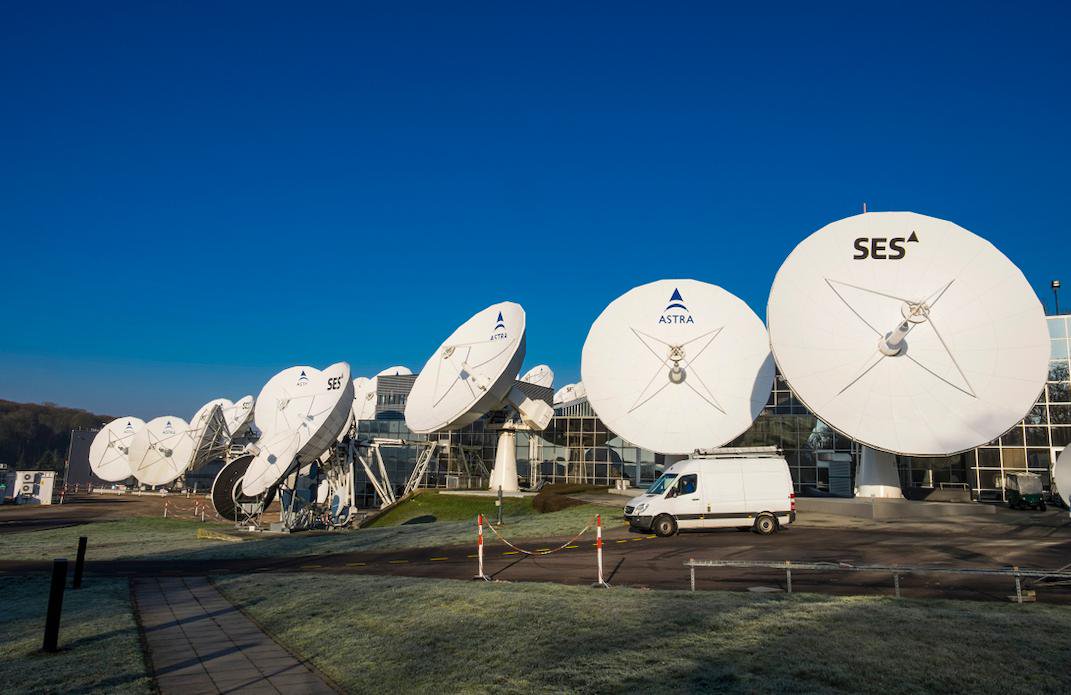Products You May Like
HOUSTON — The announcement this week by the head of the Federal Communications Commission that he will seek a public action of satellite C-band spectrum is unlikely to be the final word in that debate, industry officials believe.
FCC Chairman Ajit Pai announced Nov. 18 that he will propose the commission conduct a public auction of 280 megahertz of C-band spectrum currently allocated for satellite communications for use by terrestrial 5G services. Such an auction, he wrote in a letter to members of Congress, “will afford all parties a fair opportunity to compete for this 5G spectrum, while preserving the availability of the upper 200 megahertz of this band for the continued delivery of programming.”
Pai’s statement was a reversal of past comments, where he supported a proposal by the satellite industry to hold a private auction of that spectrum, valued by some estimates at up to $60 billion. That approach, though, was facing growing criticism from members of Congress, who wanted proceeds of any auction to go to the treasury.
Neither Pai nor the FCC have disclosed additional details about how that public auction would be conducted. In his letter, he emphasized that the C-band spectrum needs to be made available for 5G services “quickly” and that any auction “must generate revenue for the federal government.”
However, any decision on how to reallocate C-band spectrum is likely to take time. “I think there are many issues still to be resolved before we know how this is going to play out,” said Tom Stroup, president of the Satellite Industry Association (SIA), during a Nov. 21 panel discussion at SpaceCom Expo here. “It’s hard for me to envision that there will not be legal challenges. There were probably going to be legal challenges regardless of how this played out.”
One issue is what compensation, if any, there would be for existing users of C-band spectrum, an issue Pai’s letter did not address. Satellite operators have previously said they would use proceeds from a private auction in part to replace ground and space infrastructure in the affected portion of the spectrum.
Stroup noted that some legislation would address that issue. On the same day that Pai sent his letter to Congress, Sens. Roger Wicker (R-Miss.) and John Thune (R-S.D.) introduced a bill called the 5G Spectrum Act of 2019. It directs the FCC to conduct a public auction of at least 280 megahertz of C-band spectrum that would be completed by the end of 2022.
That bill would allocate proceeds of the auction to cover the cost of relocation of existing earth stations in the affected spectrum, as well as “relocation and compensation” of licensees and grantees of market access rights. At least half of the remaining proceeds would go to the federal treasury, but with an option for some portion to go to satellite operators.
A House bill introduced last month, the Clearing Broad Airwaves for New Deployment or C-BAND Act, also would direct the FCC to hold a public auction of between 200 and 300 megahertz of C-band spectrum. That bill, though, makes no provision for compensating current satellite users of that spectrum, stating only that the reallocation ensures exsiting users “receive equal or better service.”
Regardless of how the auction is constructed, there are other concerns about the transfer of C-band. “SIA’s position has been that the band continues to be heavily used, and I was very happy to see the users of that band come forward,” Stroup said, referring to broadcasters that use C-band satellite communications for distributing their programming.
“The workhorse of the satellite industry is C-band, which still delivers an exceptional amount of content around the United States,” said Ryan Terry, director of regulatory licensing and policy at Lockheed Martin, on the panel. “How do we protect those earth stations from the potential of interference that might result from terrestrial operations being deployed nearby?”
Using satellite C-band for terrestrial 5G, Terry added, could pose issues for non-satellite applications at nearby frequencies. Use of that spectrum for terrestrial 5G could interfere with radar altimeters on aircraft that work in a nearby band, 4,200 to 4,400 megahertz. “Very preliminary” tests, he said, suggest that 5G services could interfere with radar altimeters, including providing false data.
Stroup noted that the satellite industry’s efforts to find a way to repurpose some C-band spectrum came after Pai’s predecessor as FCC chairman, Tom Wheeler, criticized the satellite industry for not being willing to share spectrum in a 2016 speech. “I offer a bit of hard-earned experience: it is far more practical to get on the train than to be run over by it,” Wheeler said at a satellite industry event then.
“Given that message to the industry, even if it had not been willing to engage in sharing discussions, knew it was going to have to,” Stroup said. The satellite industry acted to free up spectrum in a cooperative manner, he said, although he added that terrestrial operators were, in general, seeking far more spectrum now than required to meet near-term demand for 5G services.
“We’re several steps away from knowing how this is going to play out,” he concluded, “but I do think it would be very bad public policy for that spectrum to be taken forcibly, whether it’s from the satellite industry or any other industry, without making sure there’s a proper transition for the users and the companies that do have a license for that spectrum.”
